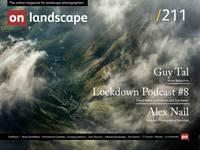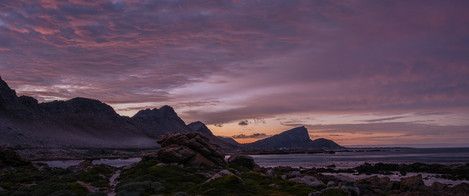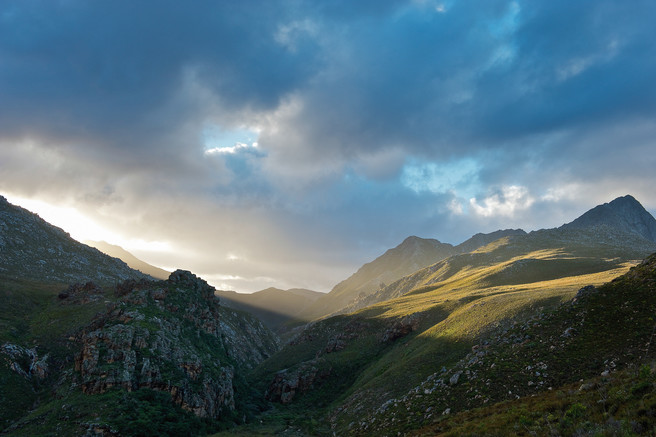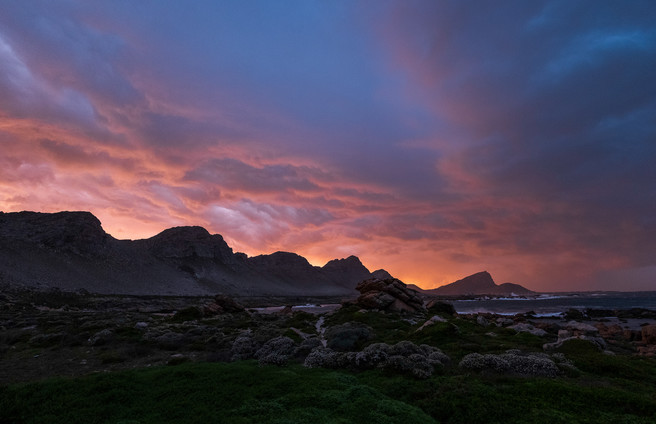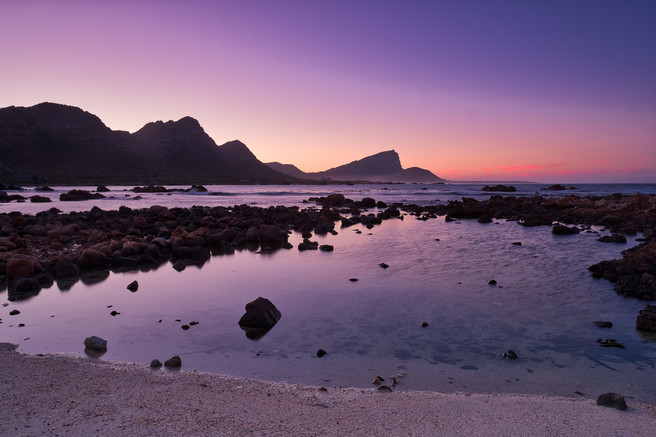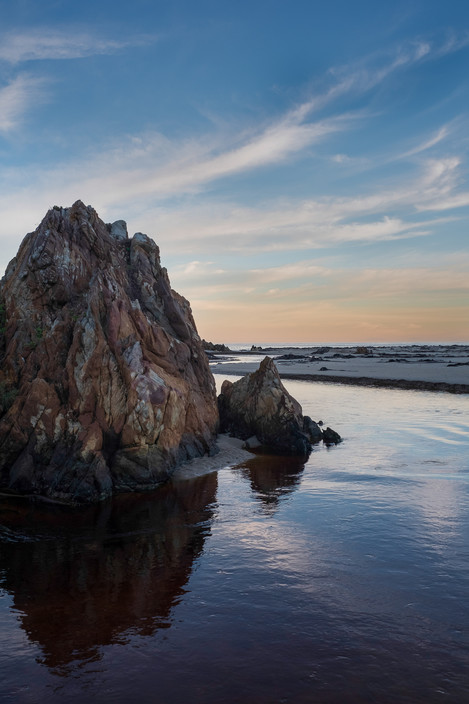My photographic blind spot

Paul Perton
By turns, illuminating engineer, marketer, photographer. I’ve lived in South Africa since the mid-70s and continue to be awed by the landscape’s ability to dwarf, shock and inspire all within the same fleeting moment.
At this time of year, it starts to get light here before 5 a.m. It’s summer and as dawn approaches, the morning light show is usually blue skies, a few clouds, the warm, rosy tinges of the rising sun and if I am fortunate, the wind isn’t howling*.
In the past, I would have already been up for an hour or more, dressed, guzzled a strong cup of espresso, put cameras and tripod in the car and be happy to drive for an hour or more to a distant spot to record a spectacular sunrise.
Which is odd, because I live in a village tightly sandwiched between the ocean and neighbouring Kogelberg mountains. It’s a tiny nubbin of rock, poking out into False Bay, about 70km SE of Cape Town and a United Nations Biosphere.
And, if I get bored with the landscapes and the flora, we have a troupe of the only ocean-side foraging baboons on the planet living in the village as well as a family of Cape leopard. The birdlife is spectacular and includes the unique Cape Rock Jumper and threatened African Oystercatcher. At least two varieties of buck live in the hills – and doubtless, also provide food for the leopards. As if that weren’t enough, we are also home to six of Africa’s seven seriously poisonous snakes, including the dangerous Cape cobra and deadly, puff adder.
So, what the hell am I doing driving away from this paradise?
Ask yourself and your photo buddies – my guess is that they have the same issue I’ve been struggling with since moving here; most will tell you that they find it nearly impossible to take meaningful photographs in their own back yard.
Dammit, I live in a place where the scenery makes it almost impossible to take a bad photograph and so, I finally did some stern self-admonishing and made a deliberate effort to try and see the village differently and shoot nearer home.
Initially, that meant my early morning drive was now less than a kilometre; down to the slipway, or bridge over the river that flows from the nearby Kogelberg and empties across the beach, into False Bay. Before 05:00, there’s not much light and the odd reflections in the water were excellent encouragement.
Despite the allure, I quickly learned to avoid the chocolate box/calendar landscapes that makeup so much of the photography of the area, preferring the odd nooks and crannies, water swirls, sand patterns; a much more micro view. These unique images - everything changes moment by moment with the ocean, tides and inevitably, the wind - gave me much more insight and it wasn’t long before I was prepared to look at the broader perspective with something of a new perspective. I wish everyone who has or still is locked in a similar photographic death-spiral could have a similar awakening.
The photographs accompanying this article are a few of the images from almost a decade of that effort; a tiny representation of what I’ve shot and all generally all within the boundaries of the village of Rooi Els, most less than a kilometre from my front door. A place that until I got my act together, I was all too happy to photographically write off.
A year ago (New Year's Eve to be precise) a reveller released a distress flare, which fell into the surrounding summer-dry fynbos, causing a massive bush fire which, fanned by a strong southeasterly wind, devastated its way across the Kogelberg, to the edge of Gordon’s Bay, some 25km away. After a week of destruction, the wind swapped around to a northwester, blowing the fire all the way back across the unburnt patches of the mountains, back into the village it had started from. As a result, more than thirty homes were lost and at least one death reported. In such a tiny community, the effect was devastating.
I see no benefit in photographing what’s left of peoples’ burned homes and preferred to record the impact of the fires; the blackened protea bushes and infrastructure speak just as loudly.
In a similar vein, but on a much larger scale, the Australians are currently discovering for themselves the absolute devastation such fires can deliver to an unsuspecting population.
All in, I feel that I’ve passed my village blind spot and come to appreciate the region even more. Plus, I don’t drive to remote locations so often these days.
More recently, political and grandparenting considerations have meant spending more time in London and less in the Cape. So, for months on end, gone are these spectacular vistas and tiny views. London presents other photographic opportunities and most of my 2019 was spent exploring the urban landscape and attempting to apply some of my ideas to a radically different set of views.
It’s harder than I expected, especially as I’ve opted to do much of my exploration by bike. It’s certainly easier to see the granularity in the landscape, but wobbling along highways and byways can often be more of a challenge than I might have wanted.
* If you’ve not been here, South Africa’s Southern Cape region is home to the Cape Doctor, a seasonal southeasterly wind that blows from mid-October until late January. Some days, it is a balmy breeze, mostly it howls out of the clear skies of the South Atlantic at anything up to and over 80km/h, sometimes double that.
It’s called the Cape Doctor because it keeps the skies clear and blows away the bad weather. When the temperature is in the high 20s (Celsius) and all the doors and windows are shut tight against the wind, it’s easy to call it something else.

